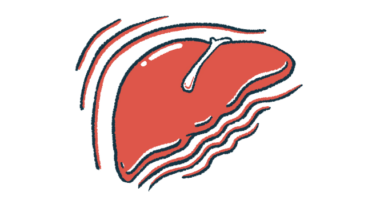Kaftrio recommended for approval in EU for younger children, ages 2-5
US approved similar label expansion earlier this year

A European Medicines Agency (EMA) committee has recommended expanding Kaftrio’s (ivacaftor, tezacaftor, and elexacaftor) label to be used in combination with Kalydeco (ivacaftor) in children with cystic fibrosis (CF) ages 2 to 5 who have at least one F508del mutation in the CFTR gene.
The CFTR modulator therapy from Vertex Pharmaceuticals is already approved in the European Union as a combination regimen with Kalydeco for CF patients 6 and older.
A similar label expansion was approved in the U.S. earlier this year, where the therapy is now sold for CF patients 2 and older under the brand name Trikafta. There, however, the therapy does not have to be used in combination with Kalydeco.
This recommendation from the EMA committee, called the Committee for Medicinal Products for Human Use (CHMP), doesn’t necessarily mean that the label expansion will be approved, but regulators will consider the opinion when making a final decision.
“Kaftrio has demonstrated unprecedented clinical benefit for eligible people living with CF,” Nia Tatsis, PhD, executive vice president, chief regulatory and quality officer at Vertex, said in a company press release.
Early treatment has ‘potential to slow disease progression’
“Treating the underlying cause of CF as early as possible in life has the potential to slow disease progression, which is why we are pleased the CHMP is supportive of expanding the indication for Kaftrio to patients as young as 2 years,” Tatsis added.
In CF, mutations in the CFTR gene lead to a defective or missing CFTR protein. Kaftrio is an oral combination of three CFTR modulators, a class of medications that aim to increase CFTR functionality.
It includes elexacaftor and tezacaftor, which work to increase the amount of CFTR protein that reaches the cell surface, as well as ivacaftor, a CFTR potentiator that works to improve its function.
Data from an open-label Phase 3 trial (NCT04537793) demonstrated Kaftrio’s safety and efficacy among 75 children with CF, ages 2-5, who had at least one F508del mutation, the most common type of CF-causing mutation.
The therapy was found to effectively reduce sweat chloride concentrations — a measure of CFTR function — and improve lung function in the young patients over about six months of treatment.
Kaftrio had a similar safety profile in young children as in older patients. The most common side effects were cough, fever, and runny nose.
Elsewhere, Kaftrio is approved for CF patients 6 and older with specific mutations. This includes Canada, the U.K., Switzerland, Australia, and Israel.
Vertex has also submitted an application to expand the therapy’s use in the U.K. to include children 2 and older.








